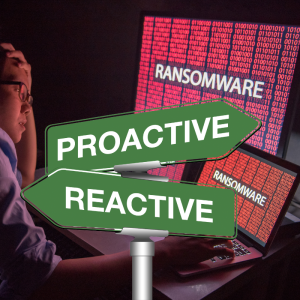
A cyber incident can be any security event that poses a risk to businesses like yours. Whether it’s a data breach, system outage, malware attack, or phishing scam, these incidents can significantly disrupt your operations, affect revenue growth, and diminish customer satisfaction.
Often, cyber incidents result in data loss or system downtime. This could mean losing confidential information, customer data, or important business records. In some scenarios, these incidents can lead to business interruptions or even financial losses.
We all can agree that no business wants to experience a cyberattack. Just one successful attack can drain your time, money, and peace of mind. Besides restoring systems and recovering data, you’ll need to notify everyone affected that their data might have been compromised. Navigating through this challenge can be tough, but it doesn’t have to be catastrophic.
In this blog, we’ll walk you through both proactive and reactive strategies to manage cyberattacks, handle the aftermath, and prevent future incidents.
Proactive Measures to Consider
By implementing the following proactive measures, you can safeguard your business from the potentially devastating effects of a cyberattack:
Use Complex Passwords
Keep your accounts secure by making sure you use complex passwords that are not easily guessed by hackers. This practice helps reduce the risk of your accounts being compromised. Here are some tips for creating strong passwords:
- Use a mix of uppercase and lowercase letters, numbers, and symbols.
- Avoid easy-to-guess words like your name or birthday.
- Use different passwords for each account.
- Never reuse passwords.
Utilize a Virtual Private Network When Working Remotely (VPN)
A VPN encrypts your company’s data and allows you to control who can access it. This not only prevents data breaches but also protects your business’s information. Ensure that you choose a reputable provider with strong security features.
Conduct Security Awareness Training Regularly
As a business leader, it’s your responsibility to ensure your security awareness training program is thorough, engaging, and adaptable to new threats. In today’s digital landscape, this is essential for protecting your business.
Perform Regular Phishing Tests
Phishing attacks use deceptive tactics to try and obtain sensitive information from users or to trick them into downloading malicious software. Since these attacks can be sophisticated and hard to detect, it’s important to regularly test your employees’ ability to recognize them.
Review Access Controls Frequently
To prevent unauthorized access, it’s crucial to frequently review access controls. This ensures only authorized personnel can access sensitive information. You can do this manually or use automated tools.
Implement Multifactor Authentication (MFA)
MFA adds an extra layer of security by requiring more than one form of identification from your employees when accessing data. This can be something they know (like a password), something they have (like a security token), or something they are (like a fingerprint).
Before we move on, it’s worth noting these cybersecurity training topics suggested by the Small Business Administration (SBA) for all small businesses:
- Recognizing a phishing email
- Practicing safe browsing habits
- Avoiding suspicious downloads
- Creating strong passwords
- Safeguarding sensitive customer and vendor data
- Maintaining good cyber hygiene
Reactive Measures to Keep in Mind
The National Institute of Standards and Technology (NIST) has a framework for reactive incident response, which includes the following five phases:
Identify
The first step in developing an effective incident response plan is to identify security risks. This includes threats to your technology systems, data, and operations. Knowing these risks allows for a more effective response and minimizes the impact of security breaches.
Protect
To protect your business, it’s essential to implement appropriate safeguards. These can include security measures to defend against threats and steps to ensure the continuity of critical services in the event of an incident.
Detect
Detecting anomalies, like unusual network activity or unauthorized access to sensitive data, is crucial for limiting damage and restoring your systems quickly after an incident.
Respond
Having a plan in place to respond to cyber incidents is key. Your strategy should cover breach containment, investigation, and resolution methods.
Recover
To minimize disruptions, you need a plan to resume normal business operations as soon as possible after an incident.
Conclusion
Implementing these proactive and reactive measures requires time, effort, and expertise that may be beyond what you can currently manage. However, by partnering with an IT service provider like BizCom, you can leverage our experience and expertise to achieve these goals. Feel free to contact us to schedule a consultation.

